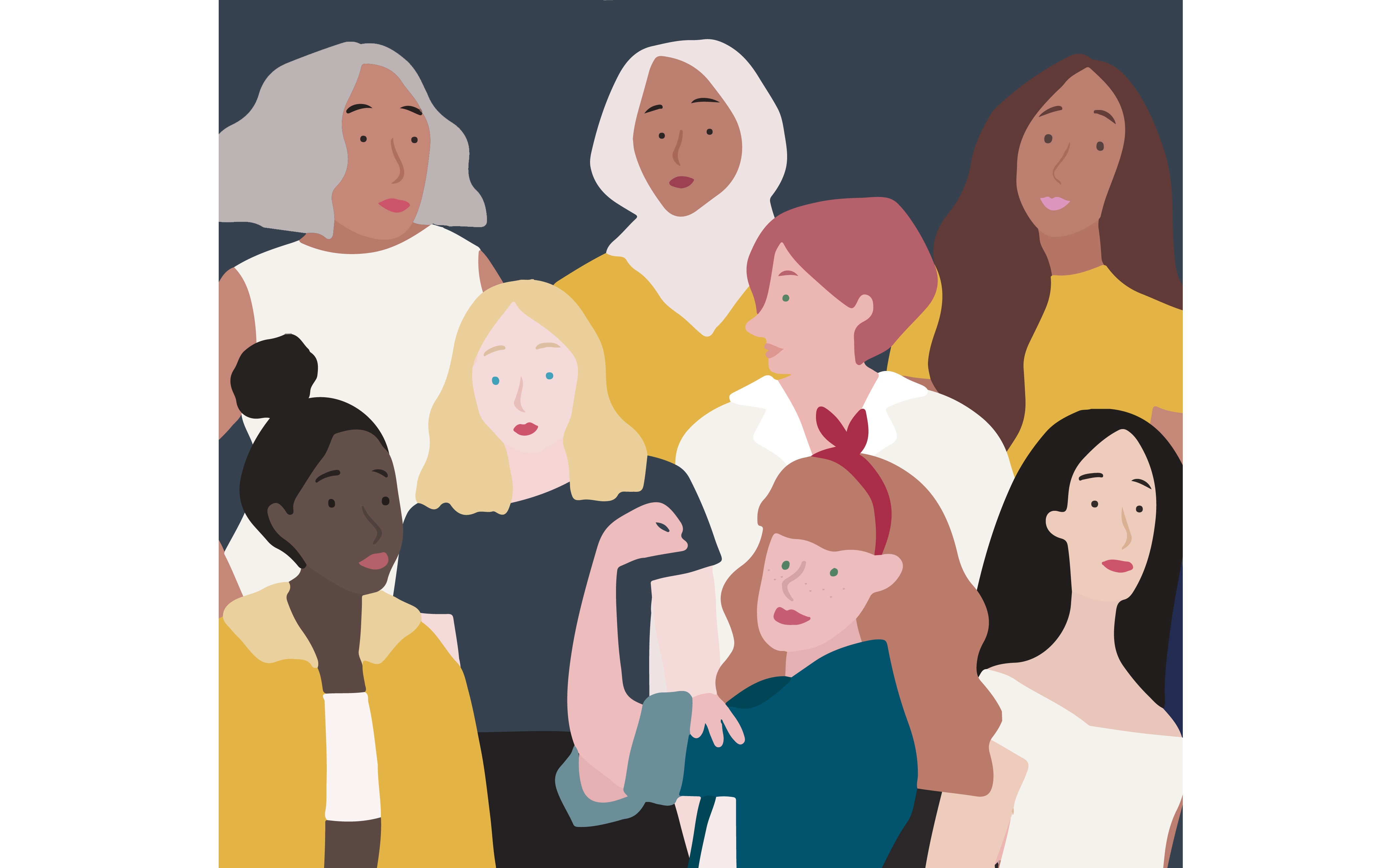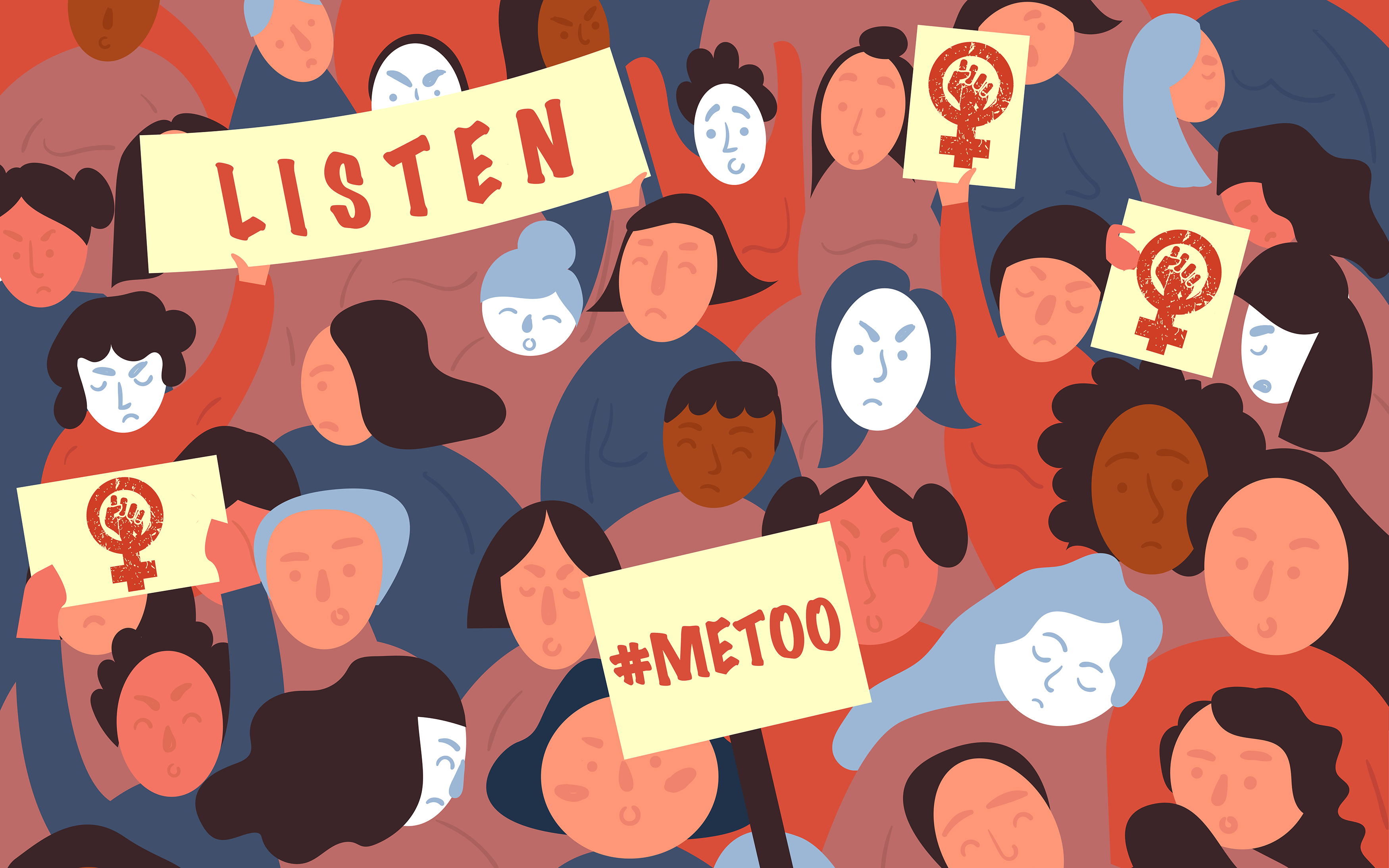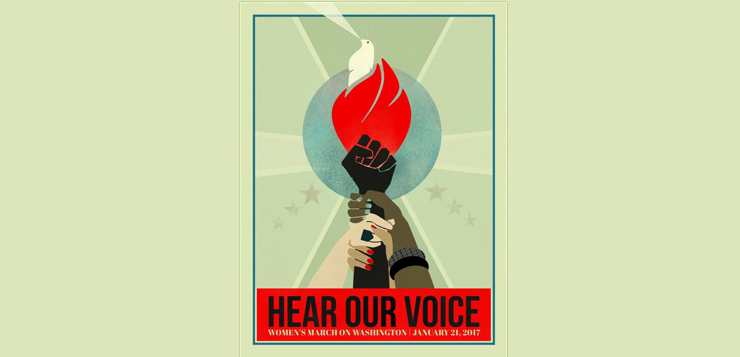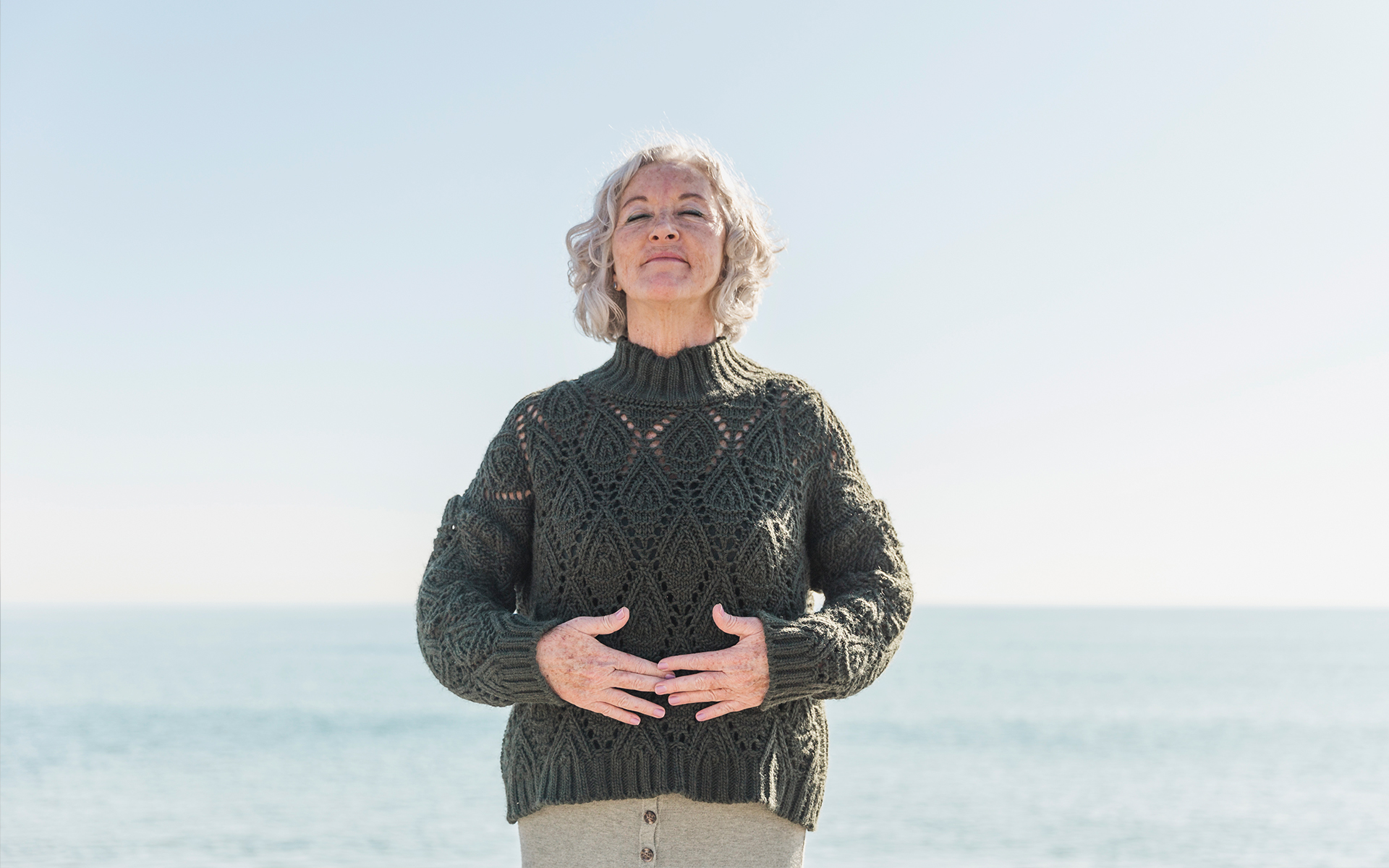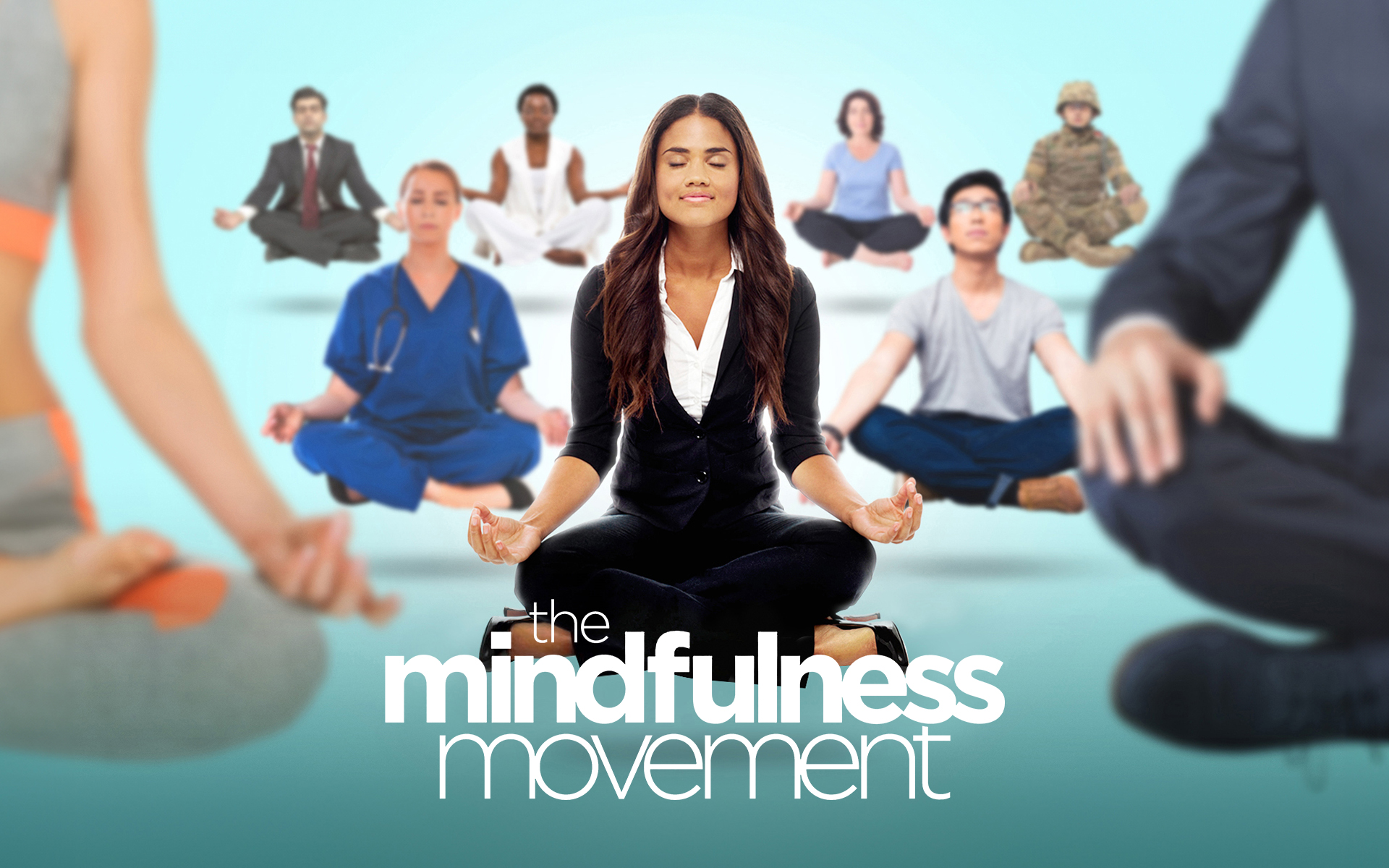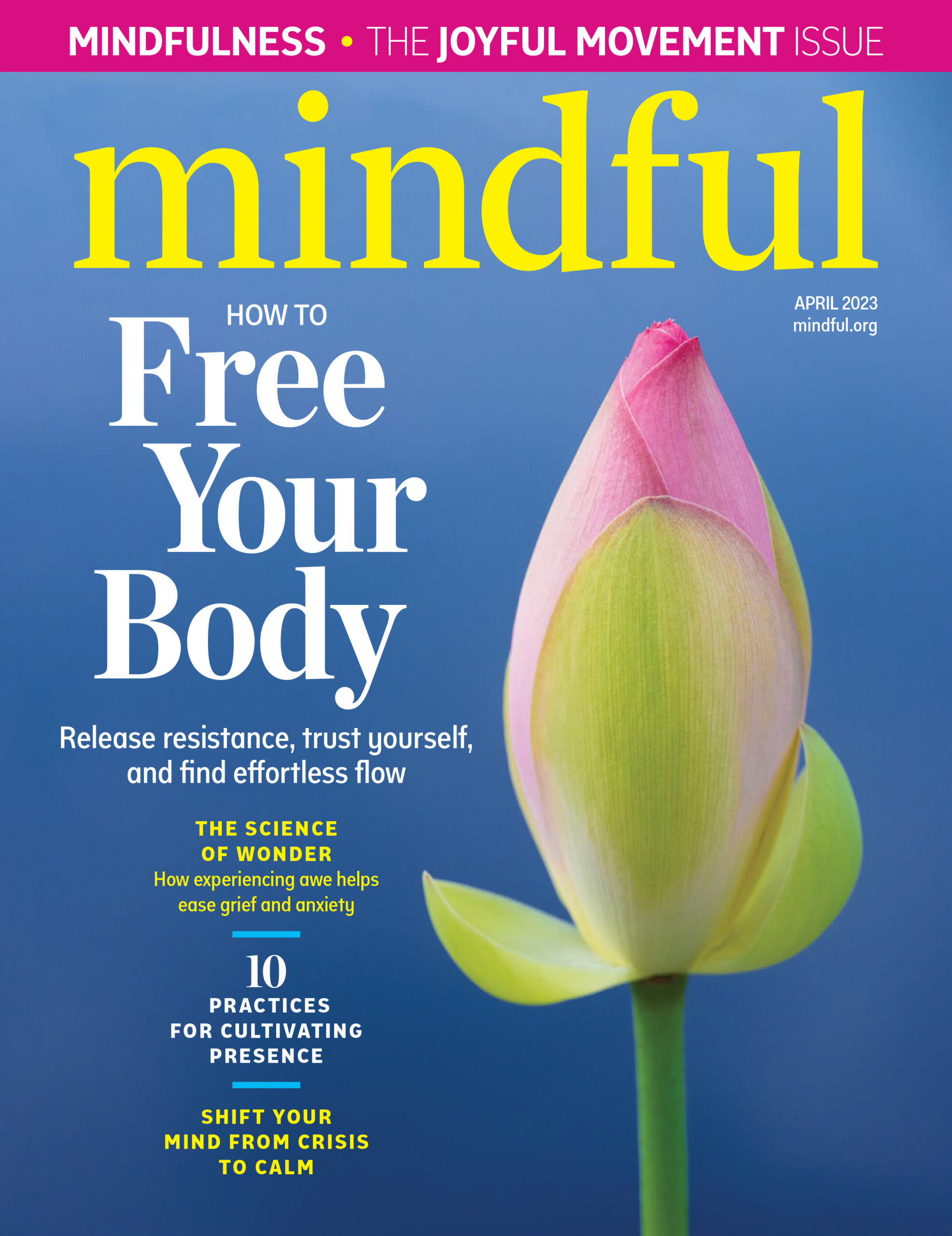In the weeks leading up to the third annual Women’s March this weekend, I got to speak to twelve of the leading women in the mindfulness movement and find out what’s on their minds.
This is by no means an exhaustive list of the women leaders in the mindfulness space—there are many more amazing women leaders, and we’ll be profiling as many of them as we can over the next year. These twelve women were chosen based on recommendations from their peers. They come from across the country and across the movement, they’re engaged in research, teaching, writing, and speaking about mindfulness both at home and around the world.
These women bring the diversity of their experiences in the world at large and in the mindfulness movement to bear in their work, and in these conversations. Despite their differences, many echoed similar themes: kindness is necessary, trust yourself, find your community, meet yourself with warmth. It feels like good advice for this weekend—and well beyond.
1) Keep listening and find your community

Mirabai Bush
Mirabai Bush has watched the mindfulness world change gradually over her almost-fifty years as a leader in the field. She’s a long-time activist, co-founder of the Center for Contemplative Mind in Society, a key contributor to Google’s Search Inside Yourself Program, author of many books including Compassion in Action, Working with Mindfulness, and more.
From her earliest days as a young meditation student in India, encountering monasteries full of men, and all-male meditation teachers, to her experience as a woman in business, asked by men who’d stop by her trade show booth if she could get them a coffee while they talked shop with her male business partner, to her experiences as a young mother, and now as a grandmother.
“Let us just say that many of the barriers to women leading a really fulfilled life and making the best contribution they can in all areas of life, they’re there for women teaching mindfulness, too. Patriarchy is really deeply embedded in our culture. Things are changing, but it sure was difficult in the beginning.”
“We can’t do it alone. We really need each other. Our lives are busy and full, yet we’re still struggling with the individualism that’s promoted through capitalism.”
Bush thinks back to those early days as a student of male teachers and notes, “we didn’t see any models of how you brought a female awareness into how you’d do these practices.” Such an awareness is crucial, of course, “in order to bring these teachings into everyday life.” For Bush, the change came when her son was born. “For me that was my biggest growth—being pregnant and then being a young mother. There was nothing like it for keeping you in the moment, without judgment, in a loving way. And being a mindful grandmother is so cool, really knowing how to listen, and tuning in to those little open minds.”
There’s something to those intergenerational female relationships, Bush believes. We have to look for ways to be women in community. “We can’t do it alone. We really need each other. Our lives are busy and full, yet we’re still struggling with the individualism that’s promoted through capitalism. There aren’t as many structures for us to even find community.” Bush adds, sometimes all it takes to make a profound change in your sense of community is one good friend “with whom you can talk about what you’re learning and what you’re struggling with.”
2) Love your imperfect self

Kristin Neff
Kristin Neff has been thinking a lot about traditional gender roles, and how they can block self-compassion. Neff is a professor of human development and culture at the University of Texas and the world’s foremost research expert on self-compassion.
Men think self-compassion is about being soft and nurturing, and that it’s something that will “undermine your strength,” says Neff. “For women, we have a little less self-compassion than men do.” Women think self-compassion is about being selfish. “Women are always supposed to focus on others, be kind to others, take care of others, and it just feels selfish to do it for ourselves.”
So these days, Neff is thinking more in terms of balance. “In some ways masculine and feminine don’t really mean that much, they’re constructs. But there’s something they point to—the nurturing, the tenderness, the openness.” That’s the feminine side. “The protection, mama bear energy, fierce compassion.” That’s the masculine side. “Everyone needs both,” says Neff.
“Women are not really allowed to be fierce, we’re not allowed to be so active, and men are not allowed to be tender and warm with themselves. So the next phase of my work will be about how to help people integrate.”
The next phase of Neff’s work is focussed on integration. “Women are not really allowed to be fierce, we’re not allowed to be so active, and men are not allowed to be tender and warm with themselves. So the next phase of my work will be about how to help people integrate.” It feels to her like urgent work these days.
Part of the challenge is shifting the capitalist narrative of “perfection” that keeps people from loving their imperfect selves. “Self-compassion is such a perfect alternative to self-esteem. You don’t have to feel special, you don’t have to feel better than other people, you don’t have to get it right, you just have to be a flawed human being like everyone else. It’s just a more stable source of self-worth and a more stable way of coping with difficulty.”
3) Unbrainwash yourself

Helen Weng
For Helen Weng, her work as a neuroscientist, her lived experience as the child of Taiwanese immigrants, and her mindfulness practice are inseparable. Weng has spent the last 14 years investigating the neurobiological mechanisms of mindfulness meditation. What she’s observed as a racialized person in mindfulness circles has made her want to do things differently—and help to change the conversation for other minorities who meditate.
Weng learned how to use her own mindfulness practice to navigate the dynamics she observed in academia. “Every time I have to assert my own voice, the white people around me are very surprised, there’s a lot of resistance, or they make assumptions that my work is owed to them. I had to learn how to keep my presence of mind when someone is arguing with me in front of a big group just to establish social dominance.” Weng also made it part of her practice to be more vocal more often, so that others who were racialized wouldn’t feel so isolated. “It’s easy to internalize for minorities that there’s something wrong with them. I thought I couldn’t trust my own voice because people were always arguing against me.”
And Weng acknowledges her own privilege and its accompanying fragility, in her work as a clinical psychologist with transgender clients. “Gender norms are so deeply socialized,” she says, “I had to do my own personal work around some issues, and used compassion and mindfulness to help me. It was uncomfortable. Realizing where you have privilege and breaking down your ego, it can feel uncomfortable and dysregulating. It’s not the job of minorities to help you navigate your fragility. Often the minority person will say things to help the majority person feel better, to ease their fragility. That dynamic is even more harming.”
Weng’s personal mindfulness practice allowed her to approach the issue of fragility in a couple of ways. One, she names and describes fragility, for those who may be unsure about the term. “When I feel my own fragility getting activated I feel like I’m going to throw up, and like I’m falling down. When you connect it to what it feels like, people get it and recognize it for themselves.” She says when people don’t recognize that what they’re feeling is their fragility, their impulse is to reset the power dynamic. “I’m the one in charge, is what the ego is saying—usually not consciously—I’m uncomfortable because I’m supposed to be in charge, so I’m going to reset the power dynamic.”
“Trust your body and psyche more and more and that’s how you’ll gain your power. It’s a process of un-brainwashing yourself.”
Weng’s other approach is to bring minority and marginalized communities into her research projects. She says not only are scientists largely homogenously white men, so are their study participants. Weng approached the East Bay Meditation Center in Oakland, CA, which offers mindfulness practices to people of color, queer people, people with disabilities and more. They collaborated on designing studies that are culturally sensitive to people from different groups. “Once you make procedures more sensitive for diverse people it actually makes it more sensitive for everyone,” Weng says. “So I’ll use these procedures as my baseline now.”
Weng knows her diversity initiatives are good not only for the communities they serve, but also for herself. “If you actually embrace the fragility and discomfort, it enriches everything. My work is enriched, and I’m enriched as a person. There’s so much more spaciousness and openness and connection at the end.”
Finally, Weng says, she’s learned to make mindfulness practices her own. “It’s trial and error to find what works for you, but listen deeply to your body to see what gives you more vitality and makes you more connected to yourself and others, and feel free to adapt or change anything. I love music, so I listen to music while I’m more present with myself. Some would tell me that’s not meditation, but they’re wrong. Trust your body and psyche more and more and that’s how you’ll gain your power. It’s a process of un-brainwashing yourself.”
4) To be alive as a human being is to have inherited much

Rhonda Magee
For Rhonda Magee, practicing law and practicing mindfulness go hand in hand. “Lawyers have to struggle with ethical questions of right and wrong,” she notes. “Lawyers are called in when there are high stakes—somebody is threatened with loss of freedom or the right to be in this country, custody over children. Lawyers are called in when those who call are suffering.”
“If we can engage mindfulness, we can manage stress and support ourselves in the practical aspects of what we’re trying to do while also deepening our capacity to serve in ways that minimize the harm we do along the way.”
For Magee, that understanding of harm includes her own experience “as a woman of color in a society and a world that wasn’t necessarily created for a person like me to thrive.” She talks about the surplus suffering “that comes with the way our different identities and our embodiments in the world are met with preconceptions and stereotypes,” and the opportunity she has to meet that suffering with mindfulness.
“Through my life, I’ve had the opportunity to become more aware of the subtle ways identity may be showing up—what is the rightful place of a woman, or a black person in a group?—by seeing how we’re all caught up in making meaning and perceiving each other through lenses shaped by a culture that has made all these identities relevant to us.”
“There are particular ways that we know something about suffering, that has an extra dimension tied to the way we’re met in the world as women.”
Mindfulness is the balm for what Magee calls “that extra layer of suffering, wounding and harm that we may be experiencing or causing others.” And she feels fortunate to have the opportunity to support others in exploring that. “Bringing mindfulness to our social identities and the challenges we face simply because of the way we’re packaged has been healing for me. Bringing mindfulness to bear on these aspects of our experiences in the world is a very rich path, a door into mindfulness as robust and rich as any other doorway.”
It’s a door Magee believes more women should walk through. “There are particular ways that we know something about suffering, that has an extra dimension tied to the way we’re met in the world as women. Knowing the great richness that comes with vulnerability and living compassionately, understanding empathy and the joy that can come from connection, means that we have a lot to offer the mindfulness movement.”
Magee speaks from the experience of a 51-year-old cis-gendered racialized black woman in America—and that informs what she is able to offer. “I really just believe that if we’re willing to look at our own experiences carefully, we have unlimited capacity to help transform the world. So we should be encouraged to be our beautiful unique selves and know that our voices are incredibly needed in the world at this time.”
5) Trust your own experience

Willoughby Britton
Willoughby Britton sees a lot of parallels between the world of mindfulness and the women’s movement. As a clinical psychologist and research scientist at Brown University Medical School, Britton has been studying the effects of mindfulness on mood and anxiety and is one of the few researchers looking into the potential negative psychological effects of meditation.
Her first inkling that her personal experiences might be marginalized by the larger mindfulness community came when her own meditation efforts, and those of many she knew, “did not conform to the dominant narrative of stability, clarity and calm. We all figured we just needed to try harder,” she says. “When I was working at in-patient hospital during my residency, there were two meditators who became psychotic while on a retreat. Thinking that two in one year was a lot, I asked some meditation teachers if they had ever seen such meditation-related difficulties before and most reluctantly admitted that they had.”
Enter the first parallel. “What I discovered through the Varieties of Contemplative Experience research study, was that the mindfulness movement has a lot of parallels with the women’s movement where the dominant narrative was not only omitting but also—through repetition—actively silencing other, less desirable narratives.”
“The mindfulness movement has a lot of parallels with the women’s movement where the dominant narrative was not only omitting but also—through repetition—actively silencing other, less desirable narratives.”
Throughout her career, as a neuroscientist, and in meditation, Britton has observed the power dynamics that influence systems, organizations, and society. “Part of my practice and research is to watch how these dynamics play out in the mindfulness world. The examples are numerous: the tendency to dismiss my own experience and yield to authority figures; the tendency to speak or act in ways that will be socially rewarded, such as reporting only the positive meditation effects or narratives, while omitting the negative ones. I can see in myself how easy it is to perpetuate unhealthy power dynamics and how vigilant and committed I have to be to counteract those default tendencies.”
That commitment, Britton believes, is what will bring progress. “Women and other marginalized groups have learned that positive change depends on giving voice to previously silenced narratives, so that a fuller, more accurate picture of reality, history—or meditation practice—can have an equal seat at the table.” So Britton prioritizes representing and documenting marginalized voices and alternative narratives in her research.
At the same time, Britton’s keenly aware of the dangers of confirmation bias. “My mindfulness practice has taught me how easy it is to deceive myself and to reinforce what I already think, so I have to keep asking: What am I missing? What are my potential blind spots? Who could help point out what I am overlooking?”
Still, she returns to a simple—though not necessarily easy—ethos: “Trust your own experience, speak your truth, find allies.”
6) #whogets2bewell

Angela Rose Black
For Angela Rose Black, PhD, founder, and CEO of Mindfulness for the People, her earliest memories of bringing mindful attention to her life happened in childhood in Indianapolis. She spent time at Flanner House, a community multipurpose center that supports, advocates for, and empowers Black families in Indianapolis, where she met Frances Malone, the director of the center’s child development center.
“Among many things, she prioritized reminding us to pay attention to our surroundings; to walk and sit with dignity; to savor our food as we nourished our bodies. I don’t think she called it ‘mindfulness’ but rather emphasized ‘awareness’ as critical to our survival as Black children in a racist society,” Black says.
As Black moved through an academic career in which she studied health disparities, with research focused on black women’s health and stress, she herself suffered from stress and sought relief in meditation and mindfulness. There too, however, she found stressors. “My very existence in a given mindfulness space is oftentimes disruptive. Opening my mouth to ask ‘who gets to be well’ is resonant for some and triggering for others. The very breath we are invited to focus on is valued in some bodies while not in others.” For Black, navigating the mostly white world of mindfulness means that “on a daily basis I am building my capacity to be with my own suffering, the suffering of racial injustice in our own backyards, while disrupting these same injustices.” And that, she says, “is an emotional, physical, and energetic workout!”
“My very existence in a given mindfulness space is oftentimes disruptive. Opening my mouth to ask ‘who gets to be well’ is resonant for some and triggering for others. The very breath we are invited to focus on is valued in some bodies while not in others.”
Black was compelled to work for change—to truly disrupt the racial injustice she saw in the mindfulness world. “Honestly, my fatigue with people of color being under-considered and undervalued in all things mindfulness research, teaching, and practice—despite our deep historical roots of engaging in mindful practices—propelled me to unapologetically create Mindfulness for the People.”
Mindfulness for the People offers a variety of courses, including mind-body training for People of Color in search of compassionate ways to address Racial Battle Fatigue, and for White people to recognize and respond to White Fragility with compassion.
While the material Mindfulness for the People teaches may be challenging to some, Black’s parting words are simple. “To women of color reading this: I see you. To white women reading this: do you see us?”
7) Un-hijack your nervous system

Susan Kaiser Greenland
Susan Kaiser Greenland found her way to mindfulness through the panicked haze of a family health crisis. She became obsessed by the idea the food her family was eating was poisoning them, and she was frantically pitching anything in their tiny New York City kitchen that contained sugar. Her husband intervened and suggested she learn to meditate. Will it solve the health crisis, she eagerly asked. “He said, ‘No, it’s for you. You’re driving me crazy.’”
A high-powered lawyer for a national television network, co-founder of the Inner Kids Foundation, author of multiple books on mindfulness, and a mother of two, Kaiser Greenland recognizes that mindfulness has been a lifeline for her. “I truly believe mindfulness-based self-regulation strategies are crucial at all ages, to give people the bandwidth to have open minds so they can learn and listen,” she says. She is motivated by the change she’s seen mindfulness bring to people’s lives. “Once people recognize their nervous systems are getting overly burdened and they can dial that back, the worldview piece comes into place.”
“The situation we’re in now keeps me up at night. No one’s talking to each other, they’re talking past each other, hand-wringing and finger-pointing. Everyone’s nervous system is jacked up, everything they do jacks it up further.”
But, she believes, there’s still plenty of work to be done on the listening and learning front. “The situation we’re in now keeps me up at night. No one’s talking to each other, they’re talking past each other, hand-wringing and finger-pointing. Everyone’s nervous system is jacked up, everything they do jacks it up further.”
She recognizes that in her own past, even with the benefit of her mindfulness practice. “The generation of women who were coming up through the corporate world when I was there, in order to get where we were going, you had to take on a lot of male characteristics. I used to come home like the terminator,” she recalls. “I know mindfulness has helped me soften that edge and be more confident, but that was a price of trying to break through to certain jobs that just weren’t open to women at the time—you had to develop a male way to navigate.” Now, Kaiser Greenland knows “there’s a different way to navigate, kinder, more compassionate, more effective—and women have an easier time getting that than men.”
8) Be clear on what you want and find allies

Amishi Jha
Amishi Jha knew she needed help when her toddler looked up at her during storytime and asked what a “Womp” was. Jha had read this same book to her son dozens of times, and had been truly looking forward to spending this time with him. “What is he talking about?” she remembers thinking, realizing she didn’t have a clue—though she’d been reading about Womps for several pages, and had over successive nights. She was in her second year as an assistant professor, her husband was starting grad school, and she’d lost the feeling in her teeth from grinding them so ferociously. “I was at the point of quitting. I needed to do something that felt more manageable to me.”
To Jha’s surprise, meditation turned out to the answer. She’d been raised by Hindu parents who both meditated daily. But Jha was a scientist. “A rational person. I do things that are evidence-based,” she remembers thinking. She happened to hear Richard Davidson talk at the University of Pennsylvania. “He showed these brain images, one a brain induced into a negative mood, and one a brain induced into a positive mood. I asked him ‘how do you get that negative brain to look positive,’ and he said, ‘meditation.’” Jha was shocked, but she wanted that positive brain, so she bought Jack Kornfield’s Meditation for Beginners, and within a few weeks had noticed a difference in herself—and also found a new area of research for her neuroscience lab. “I got really interested in how we can offer these practices to other people who have extremely demanding high-stress jobs, medical and nursing professionals, active duty military personnel and spouses.”
“Hearing about meditation from a western-trained Indian scientist really got those women empowered to say ‘I can have this practice available to me day-to-day while managing my kids, my family, my profession.'”
Jha’s work on the science of mindfulness took her to India to present her research at the Mind and Life Institute. While there, she was able to visit the town where she’d been born, where excited relatives quickly organized a public talk for her at a local studio. The room was full—mainly of young, professional women with families. But during the Q&A session, a man stood up and asked: “Why are you coming here, as a westerner, to tell us about these practices that we developed in this country? We’ve had meditation retreats in the mountains forever.” This was a question Jha had been dreading. But then a woman spoke up.
“One of the women in the room raised her hand and said ‘yes, but we’re working moms, and we want to know how to do this every day. We can’t go away to a hilltop meditation retreat!’” For Jha, it was a full-circle moment. “Hearing about meditation from a western-trained Indian scientist really got those women empowered to say ‘I can have this practice available to me day-to-day while managing my kids, my family, my profession.’”
For Jha, what empowers her is supporting—and being supported by—other women. “Be clear on what you want to achieve, and find allies,” she says. “That sense of being supported and acknowledged and valued is so important.”
9) Make America kind again

Shelly Tygielski
Shelly Tygielski has been working hard to bring more men—especially young men and boys—into the mindfulness movement, where most of her colleagues are women. “On the one hand that’s lovely, because it’s a safe space, and we have the ability to have this collective experience and to discuss things that are sometimes challenging or difficult to discuss when there are men in the room.” On the other hand, Tygielski, who launched America Meditates workshops in cities across the country, and also staged the first mass meditation at a sporting event, with Miami Heat Nation Meditation, knows that if real change is going to come, it’s going to happen when more of us are rowing in the same direction—and that has to include men and boys.
She thinks back to her twenty years in the corporate world, where she ended her career as president of a company with 2,400 employees. “I was usually the only woman in the room and being mindful or being emotional was seen as a weakness, instead of a strength. So, for me, bringing the conversation into the boardrooms, into congress, into politics, around our dining room tables with the men in our lives, is crucial if we want to create this paradigm shift to make the world a kinder place.”
“Activism burnout is a real thing, compassion fatigue is a very real thing, secondary trauma is a very real thing, and I think that as women, in general, we’re raised to be really great caretakers, but we’re horrible self-caretakers.”
To that end, she’ll be taking her sixteen-year-old son and some of his friends with her to the Women’s March in Washington this weekend, and she hopes more men show up. “I want men to support women, not just by saying, ‘oh honey you should go,’ but actually by physically being there and being just as equally outraged by what’s happening and what’s going on in our political system today. Until all women are equal, with equal pay, equal access to rights, to healthcare, to speak up, no man is equal. There’s got to be that authenticity, and that authenticity means having to show up.”
And to the women who have been showing up, Tygielski has this to say: “Activism burnout is a real thing, compassion fatigue is a very real thing, secondary trauma is a very real thing, and I think that as women, in general, we’re raised to be really great caretakers, but we’re horrible self-caretakers.” Tygielski sees strength in numbers—and advocates a move from self-care to communities of care. And, she says, mindfulness is at the core of that. “Movements are about sustainability and about being able to create consistency in being able to show up. To really show up, not just show up to a meeting and your mind is somewhere else, but be able to show up fully, as the best version of yourself. Mindfulness has really helped me create that sustainability and center myself so that I could show up for the things I feel are larger than myself, and also make a much bigger impact.”
10) Believe yourself

Sharon Salzberg
For Sharon Salzberg, world-renowned meditation teacher, bestselling author of Real Happiness and nine other books, it all comes down to advice her teacher gave her in Calcutta, India, in 1974. “‘You really understand suffering, that’s why you should teach,” Dipa Ma told Salzberg, then a young adult with every intention of living in India forever, and remaining a life-long student. “I had a very tumultuous difficult childhood,” Salzberg says, “and that was the first time I ever thought about it as a potential credential for anything.”
Salzberg began as a reluctant teacher of meditation, and soon founded, along with Jack Kornfield and Joseph Goldstein, the Insight Meditation Society. Back then, she remembers, the main concern was understanding emptiness. But during a sojourn to Burma (now Myanmar) in the mid-eighties she was introduced to loving-kindness practices. The practices resonated hard with Salzberg, and she brought what she had learned back to the US, eventually writing a book called Lovingkindness. It was not met with open-arms in the meditation world.
“People said loving-kindness wasn’t an insight technique. They said, ‘it’s just a feel-good practice.’ But I had had a very powerful transformative experience with loving-kindness practice, so I just kept on teaching it.”
“It was a rough go,” she says. “Mindfulness was gaining popularity, scholarly research was beginning.” But loving-kindness was ahead of its time. “People said loving-kindness wasn’t an insight technique. They said, ‘it’s just a feel-good practice.’ But I had had a very powerful transformative experience with loving-kindness practice, so I just kept on teaching it.”
She discovered that a practice some of her peers wrote off as “just” a feel-good practice actually resonated hard with others, as well. “It’s very gratifying now that the pendulum has swung the other way,” she says, “that people are realizing compassion is the thing that was missing from mindfulness.”
She credits the kind words of her teacher, all those years ago in India, for helping her maintain her loving-kindess practice when others viewed it as frivolous. “Dipa Ma said to me: ‘You can do anything you want to do, it’s just you thinking you can’t do it that will stop you.’”
11) Find the Win-Win-Win

Janice Marturano
Janice Marturano was a high-achieving, burned-out executive at General Mills when a friend convinced her to spend a week at a spa. Marturano had just overseen a high-stakes acquisition that was supposed to take six months to complete, and took 18 instead. During that period, both her parents died. “I did what most professionals do: We play hurt. We keep going because that’s what we do. We still have children to care for, and spouses, we still have our responsibilities at work.”
That spa, though. Marturano scoffed at the idea, only softening when she saw one of its offerings. “The power of mindfulness, an intensive retreat for executives and innovators. And at that moment, in my very warped brain, I said, well, maybe if it’s intensive,
it’s OK to go to a spa.”
That retreat changed her life. She went all in, looking at neuroscience research, and studying the way other cultures use mindfulness. She began to see overlaps between this new passion and a longstanding one: leadership. She worked with a friend to develop the very first mindful leadership curriculum at the University of Massachusetts.
Marturano also founded and leads the Institute for Mindful Leadership, which offers retreats and courses to leaders and employees at companies and organizations. For Marturano, key to mindful leadership is what she calls the “win-win-win,” which refers to a business decision that benefits the company, the employees, and society. She believes mindful leadership is not a luxury. “It’s an absolute imperative if we want professionals to do the work we need them to do—for themselves, for their organization, and for that big picture. Boy, do we need it. Government can’t do it. Nonprofits don’t have enough money to do it. We need these folks to have the spaciousness to find the win-win-win.”
12) Feel the Gratitude of Connection

Pat Rockman
Pat Rockman “woke up” for the first time when she was 14 years old, at a leadership conference put on by the Anglican Church.
“I was sitting in a little valley and I remember having the experience—it sounds kind of hokey—of really being one with all of the environment,” she says. “And I recognized that that’s not usually the way I walked around.”
The experience changed her life. In the short term she broke up with her boyfriend (“Because I couldn’t talk to him about this experience. I remember saying, ‘you can’t see the stars, I can’t be with you,’” she says, rolling her eyes just a little at her younger self), and changed her circle of friends. In the long run, “it initiated a path of seeking and study and wanting to understand what it is to be a human being.”
Rockman pursued that understanding from all directions, studying Sufism for a while, looking into Buddhist psychology, becoming an MD, and then a medical psychotherapist. She trained with Zindel Segel and began offering Mindfulness-Based Cognitive Therapy to her patients. In 2011 she and Tita Angangco opened the Centre for Mindfulness Studies in Toronto, which delivers mindfulness programs to trainers working in healthcare and other fields, as well as to the general public.
These days, Rockman values the interdependence of the group of women with whom she collaborates on writing, teaching, and developing mindfulness programming, with a special focus on mental health. “I love the work. I really want to be able to bring people, and many of them are women, into this work and I love working with them. I feel really lucky to be a woman doing this. I just feel grateful. What else can you feel?”
Sign up for Mindful Women Meditate Together
Read More
The Five Rules for Self-Care
Being whole and meeting our own emotional and physical needs first, is the only way we will build the world we want to see in the future.
Read More
10 Mindfulness Practices from Powerful Women
We’ve gathered 10 mindfulness practices created by women to help you live a generous, compassionate, healthy life.
Read More
Why Women Should Embrace Their Anger
A new book argues that rage could help women to improve their psychological health and move society forward.
Read More
Mindful Activist’s Toolkit for The Women’s March
Here are eight mindfulness tools to march with when you join the masses to honor our democracy at the Women’s March.
Read More
